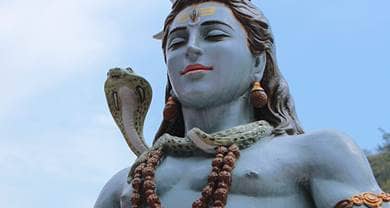- Trending:
- Forgiveness
- |
- Resurrection
- |
- Joy
- |
- Feminism
- |
- Afterlife

RELIGION LIBRARY
Shaivite Hinduism
Shaivite Hinduism, also known as Shaivism, is—along with Vaishnavism, Shaktism, and Vedanta—one of the principle forms of the tradition. The origins of the tradition are difficult to determine, but the tradition can certainly be traced to the Vedas; it is often understood to be the oldest of the major Hindu traditions. The distinct sectarian worship of Shiva, and the specific philosophical and devotional structures of Shaivism, probably did not emerge until sometime between the 2nd century B.C.E. and the 2nd century C.E. Shaivas, as the name implies, focus on the god Shiva as the supreme deity, although other deities are not excluded from the tradition. Shiva is worshipped in a variety of forms, some of the most common of which are: the so-called destroyer (and purifier) of the world at the end of the cosmic cycles; the great ascetic and meditator; the lord of humans and animals; and the symbolic lingam (the embodiment of generative power). In addition to a rich and varied devotional system, Shaivite philosophical and theological systems are extremely important in the broad Hindu context, and include the Shaiva Siddhanta, Shaiva Advaita, and Pashupata schools, among many others.
Quick Facts
| Formed | -150 |
| Adherents | 200,000,000 |
| Deity | Shiva |
| Sacred Text | Vedas, Bhagavad-Gita, Upanishads |
| Origin | India |
| Headquarters | None |










